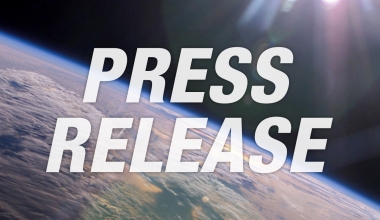Today, there is growing emphasis on much higher orbits, including cislunar space—the region of space within Earth’s gravitational influence, which includes both Earth and the moon, the lunar surface, and several other orbits of interest, out to an approximate altitude of 550,000 km.
Cislunar space is an evolving, complex ecosystem. It is a dynamic environment for both orbital mechanics and economic opportunity. Interest in this region of space—for its unique physics, vantage point, and potential resources on the Moon—is growing exponentially. Distance, darkness, and orbital dynamics in cislunar space present novel challenges for our industry.
SSI has adopted cislunar space safety as a formal focus in response to a clear demand signal from multiple players in the enterprise to establish a sustainable ecosystem there. Aerospace and SSI are actively involved in several collaborative efforts across U.S. and international space to ensure the safe and sustainable exploitation of cislunar space.
Standards and Best Practices
The fundamental difference in behavior between cislunar and near-Earth orbits has substantial implications on the composition of rules and policies related to debris mitigation, safety of flight, and disposal. A sustainable cislunar ecosystem requires interoperability across multiple layers of infrastructure including communications, navigation, transportation, mobility, power, and more.
New technologies and standards are needed to avoid recreating the same traffic and debris challenges around the Moon that exist in Earth orbit. Shared norms of behavior and a coordinated effort are required to keep cislunar operations sustainable. If there is a collision in cislunar space, the debris event could last thousands of years, and pose significant obstacles to realizing the strategic value of the Moon and cislunar space.
As the number of cislunar missions grows, ad hoc agreements and waivers are not sustainable options. Without a new effort to revise policies and rules to account for cislunar operations, the space enterprise runs the risk of setting bad precedents with a patchwork of exceptions, waivers, and idiosyncratic interpretations of the rules that will imperil the long-term sustainability of cislunar space.
In June 2022, Aerospace called for the establishment of a cislunar master planning effort, and we currently chair the American Institute of Aeronautics and Astronautics’ Cislunar Ecosystem Task Force, among other contributions to coordinating the sustainable development of cislunar space.
Research and Development
Aerospace is tracking more than 80 companies and a dozen U.S. government organizations investing north of $10B in cislunar capabilities as of 2023 in one or more layers of foundational infrastructure. With more than 30 countries planning over 100 missions with landings on the Moon in the next decade, and each sourcing from an expanding ecosystem of commercial suppliers, it is critical to track this evolution.
SSI is leveraging Aerospace’s investments in digital engineering tools and using our technical expertise to develop better astrodynamics modeling that will help us understand and predict evolving debris and traffic environments.
Policy and Strategy
The National Space Policy, published in December 2020, calls for the U.S. to “lead the return of humans to the Moon for long-term exploration and utilization.” It specifically calls for the U.S. to establish a permanent human presence on the Moon and cooperate with industry and international partners in developing infrastructure and services. The National Science & Technology Council has more recently published its National Cislunar Science & Technology Strategy, outlining objectives for realizing U.S. leadership in cislunar space, with the core objective to enable long-term growth in cislunar space and establish a sustainable cislunar ecosystem.
Multiple international policies and agreements address cislunar space:
- The United Nations Committee on the Peaceful Use of Outer Space – or COPUOS – was permanently established by resolution in 1959 and while its charter has been updated since then, it remains basically intact.
- The Treaty on Principles Governing the Activities of States in the Exploration and Use of Outer Space, including the Moon and Other Celestial Bodies. This is commonly known as The Outer Space Treaty of 1967.
- NASA led the creation of the Artemis Accords, signed by dozens of nations, as part of the United States’ return to cislunar space with the Artemis program. These accords propose the peaceful use of space with member nations providing transparency for their cislunar efforts and interoperability of their infrastructures using international standards and principles grounded in the Outer Space Treaty.
Aerospace and SSI are broadly engaged across multiple dimensions of the national cislunar strategy in support of civil and national security space customers, and internationally through various channels. SSI experts are well positioned to promote cross-agency and broader partnerships to advance integrated approaches that enable the space enterprise to achieve more by working together.
Previous: Human Spaceflight Safety Next: Space Situational Awareness






